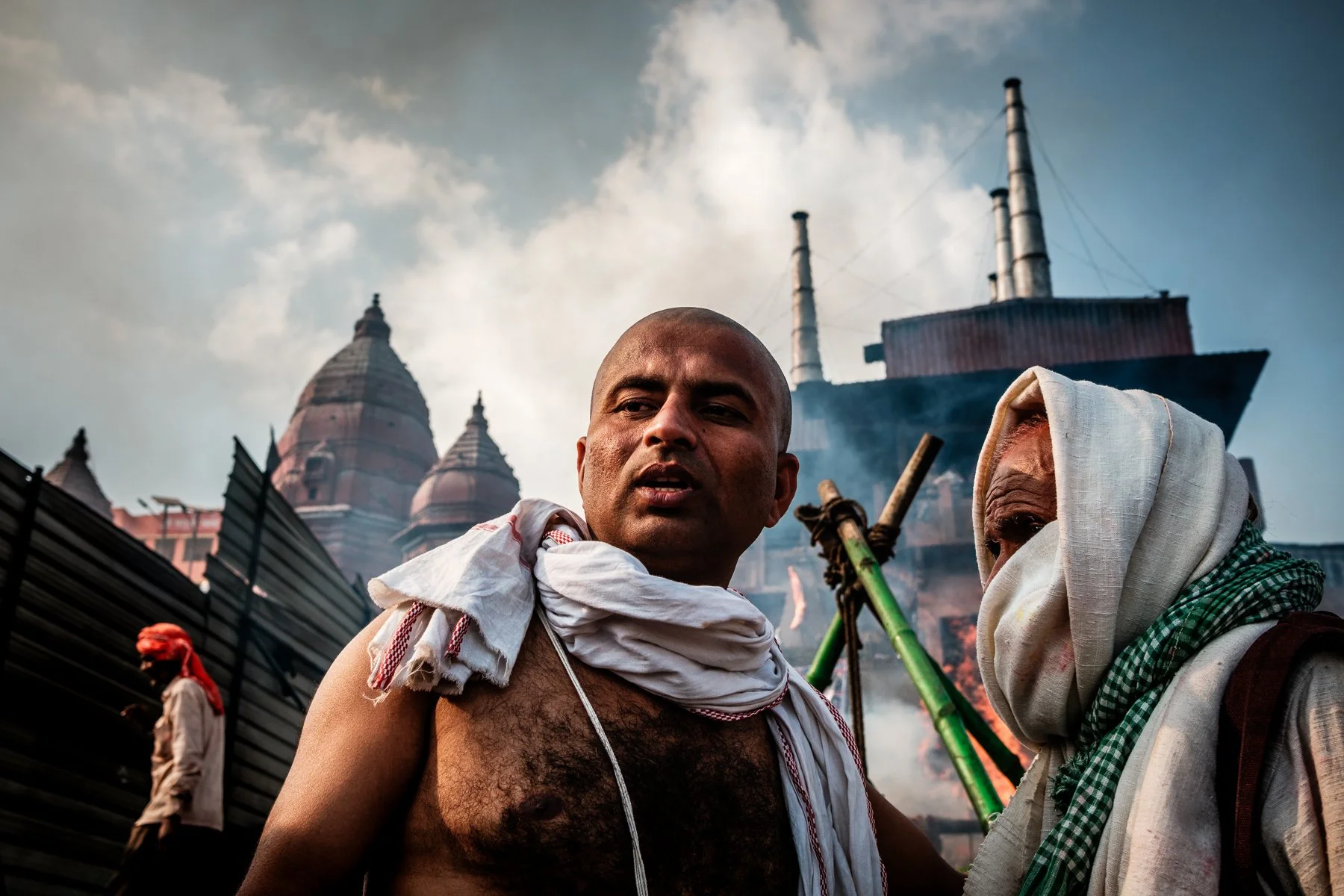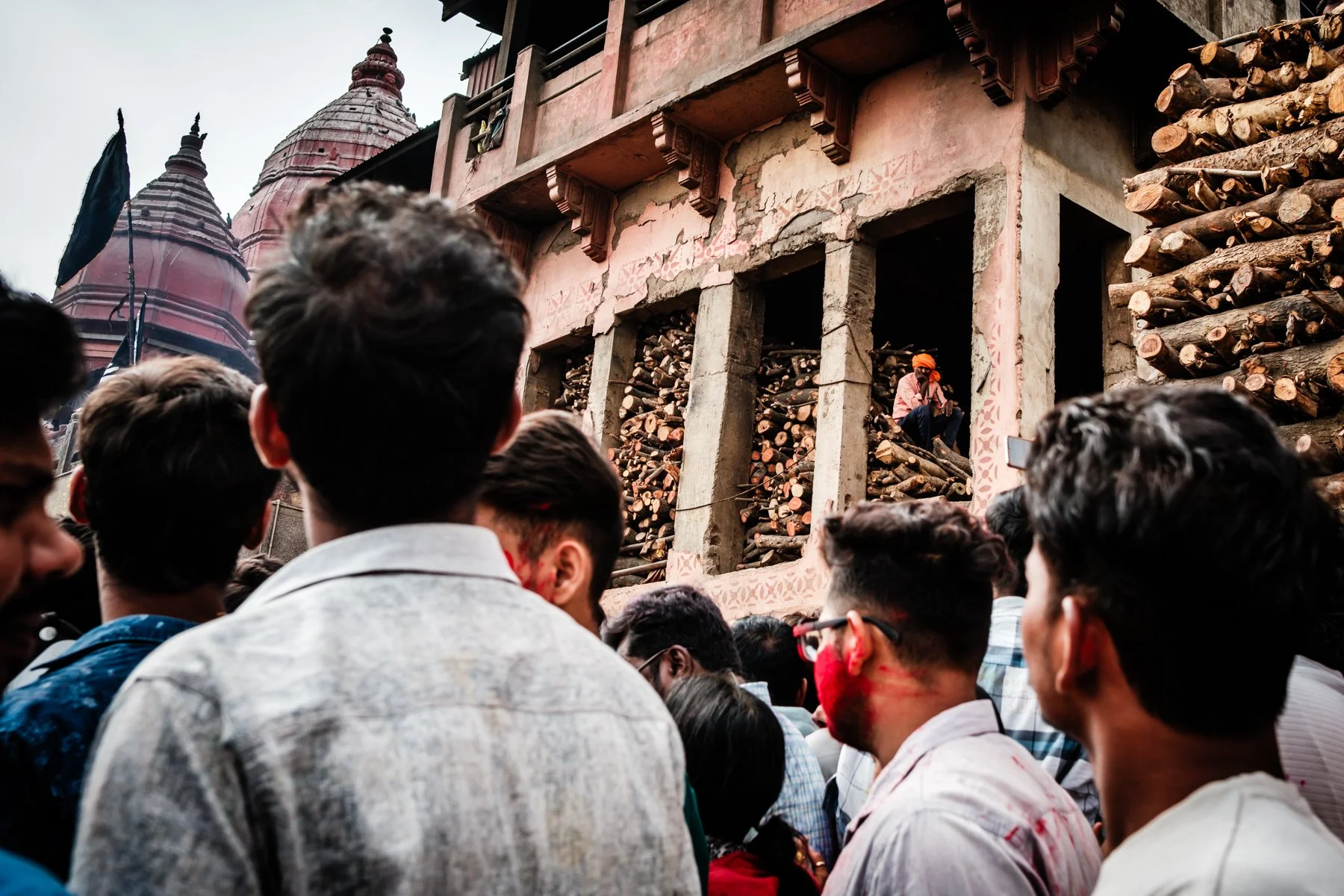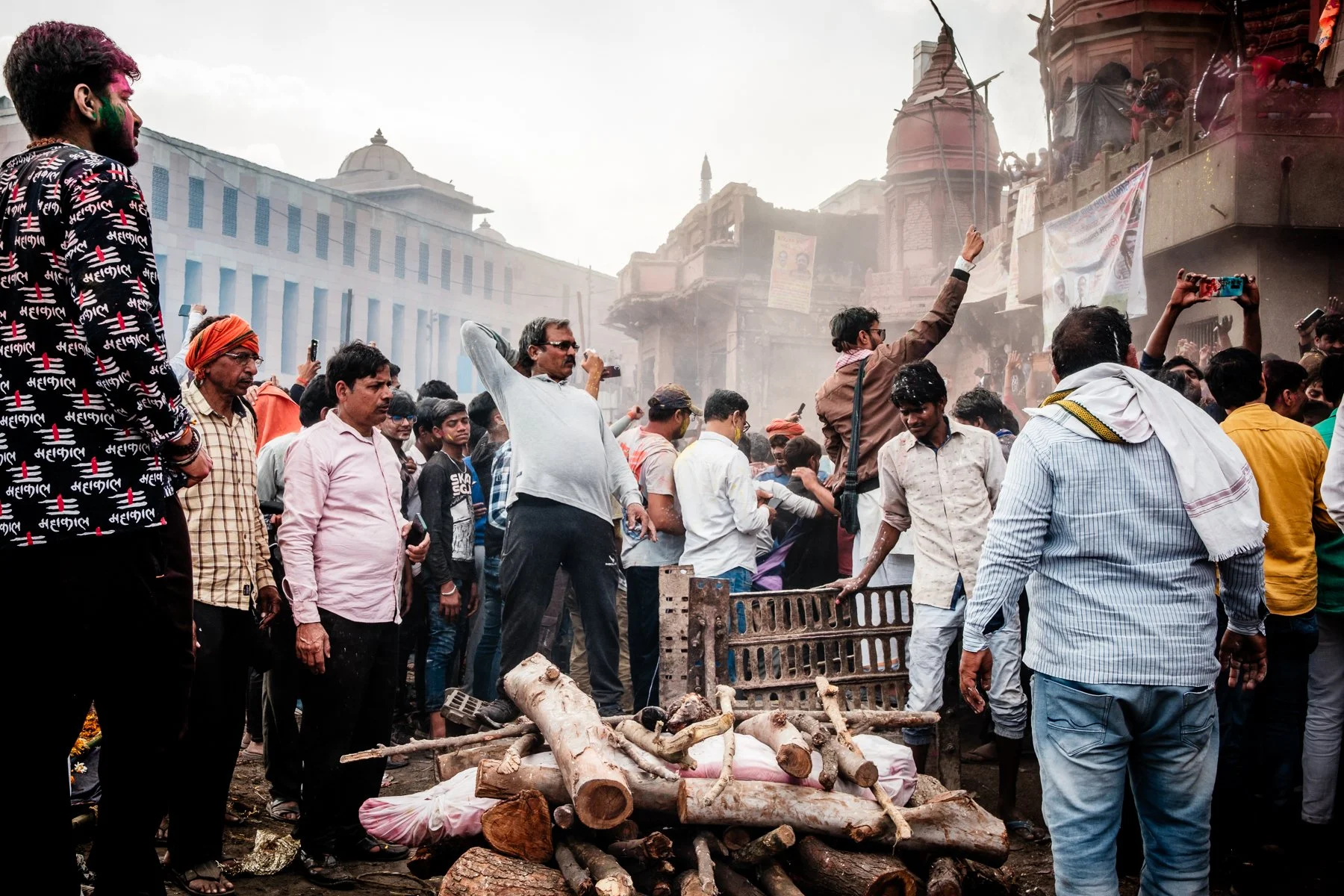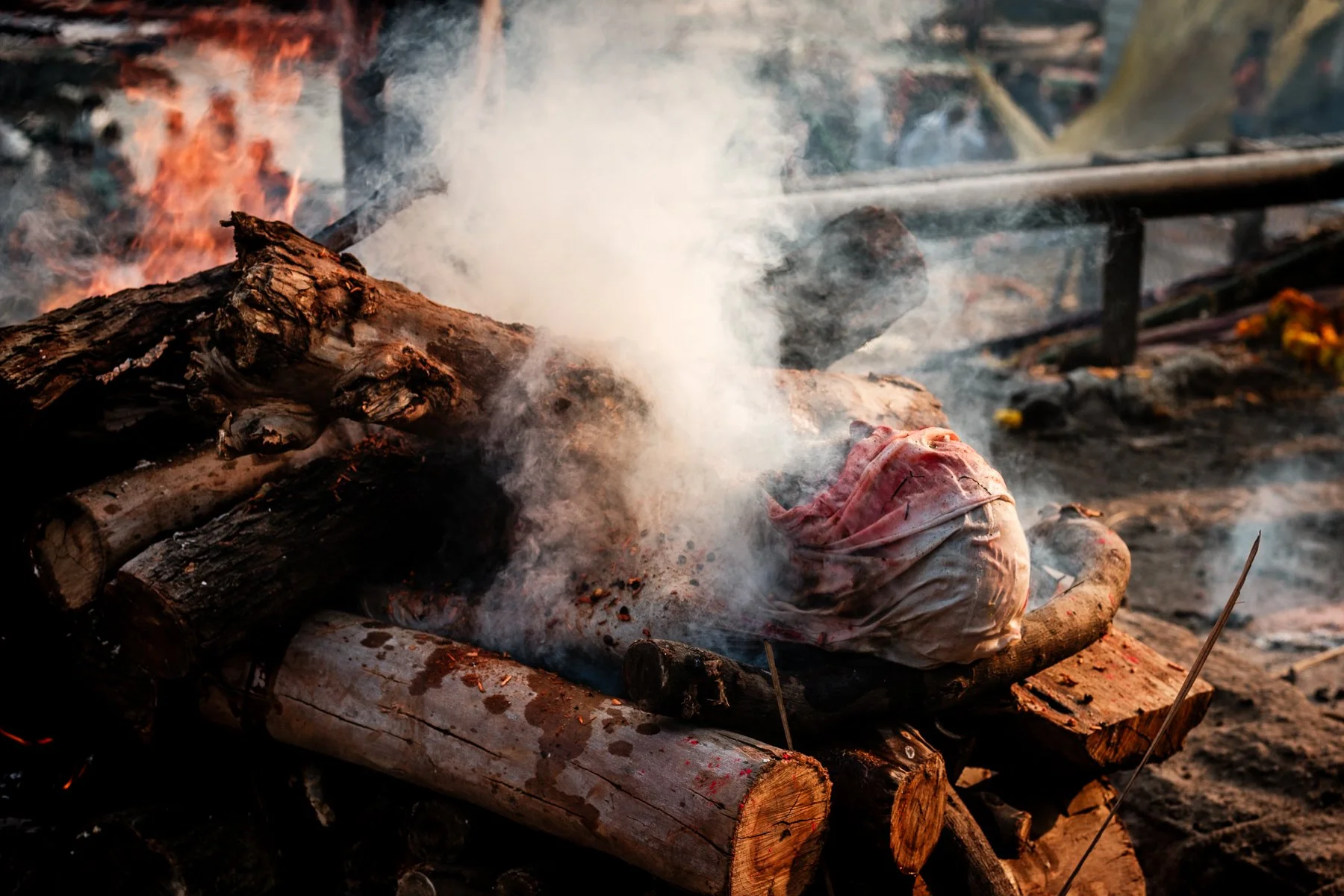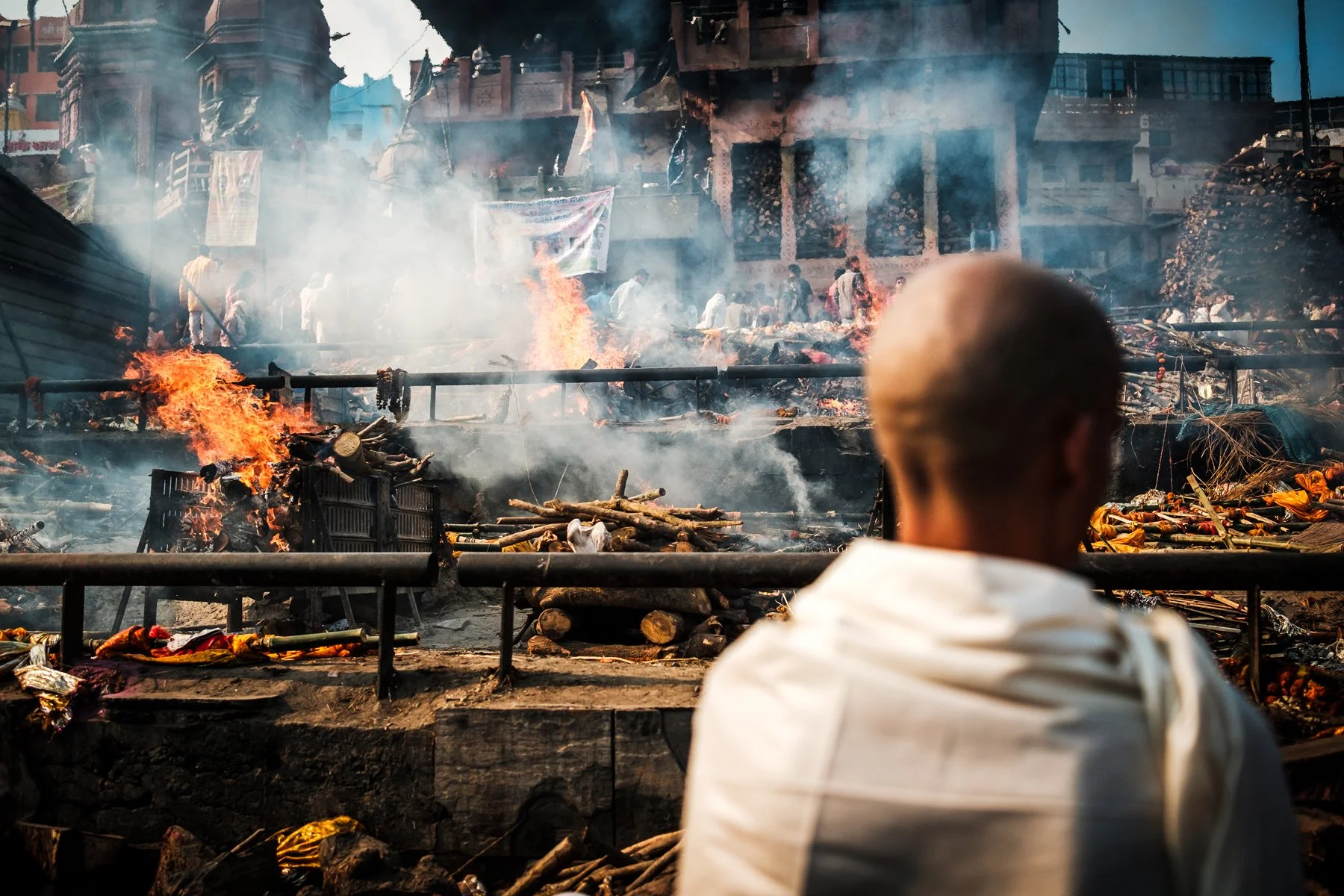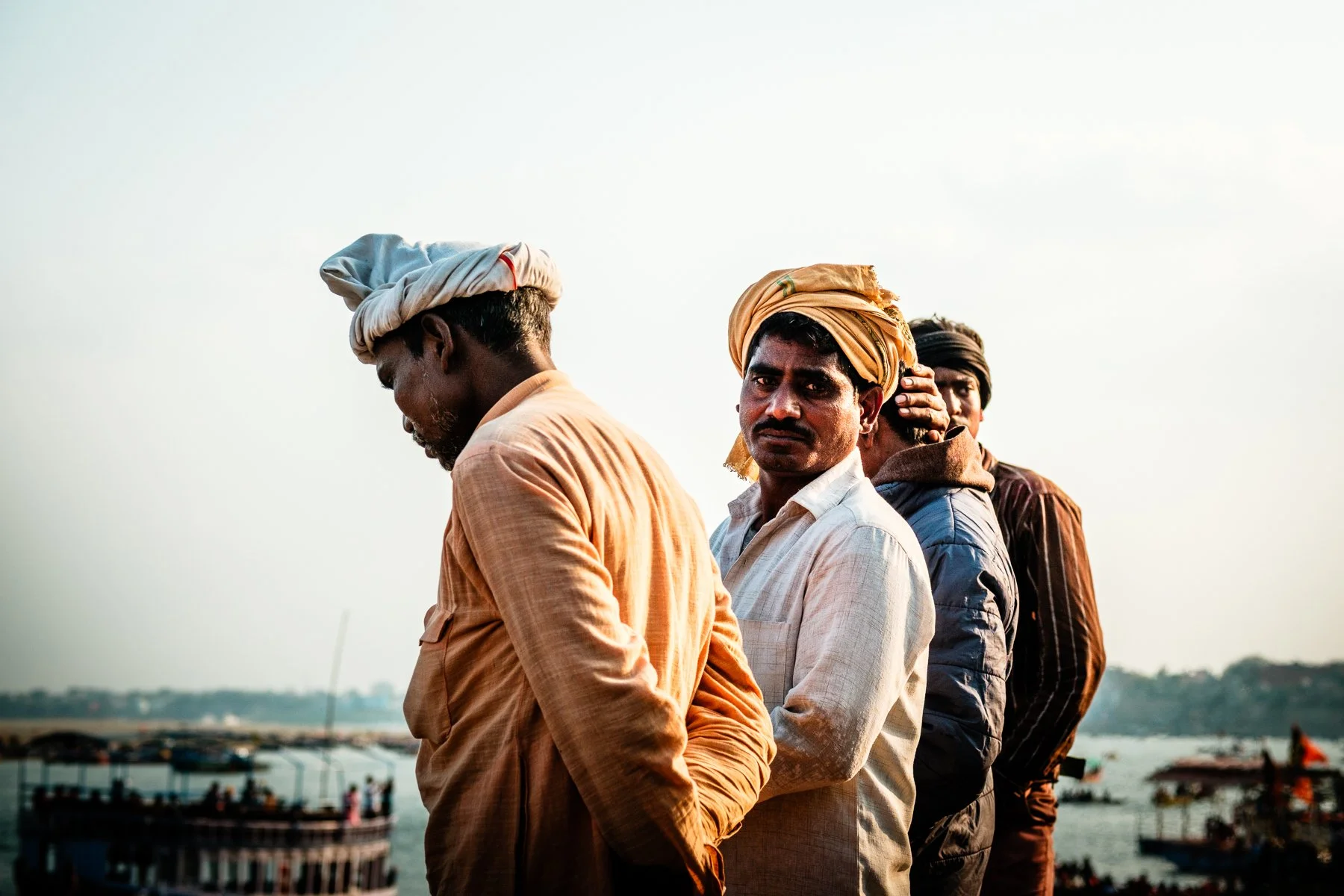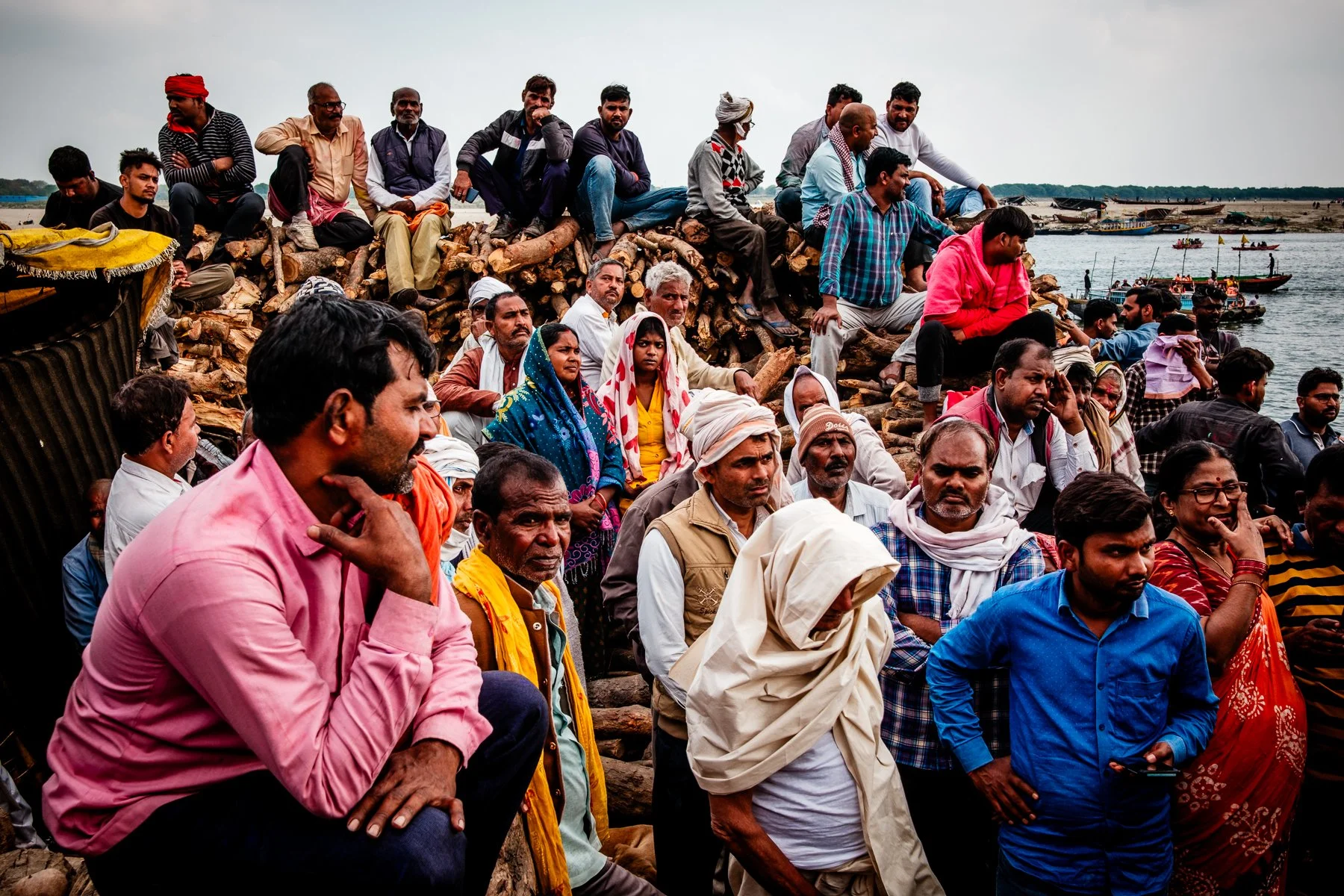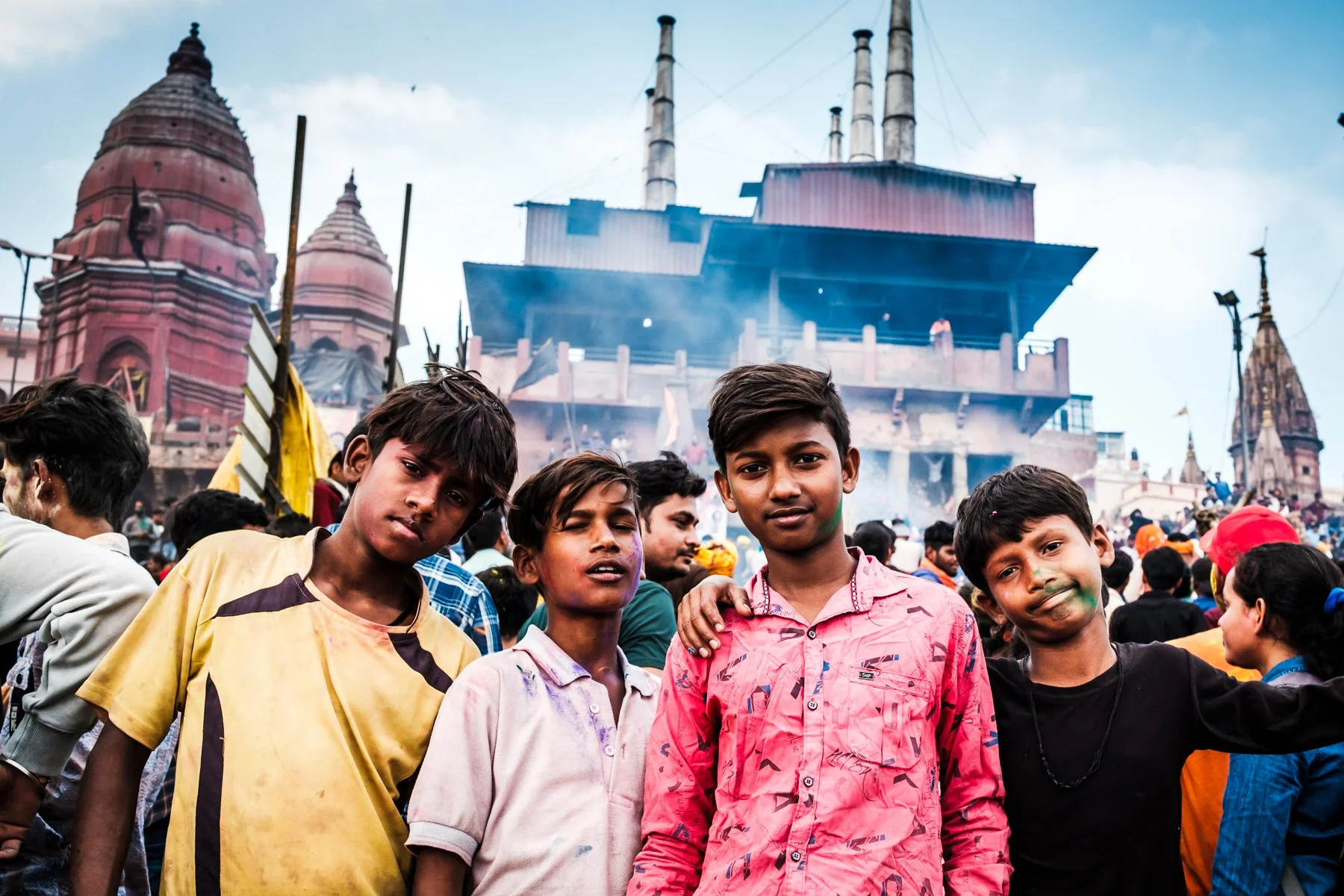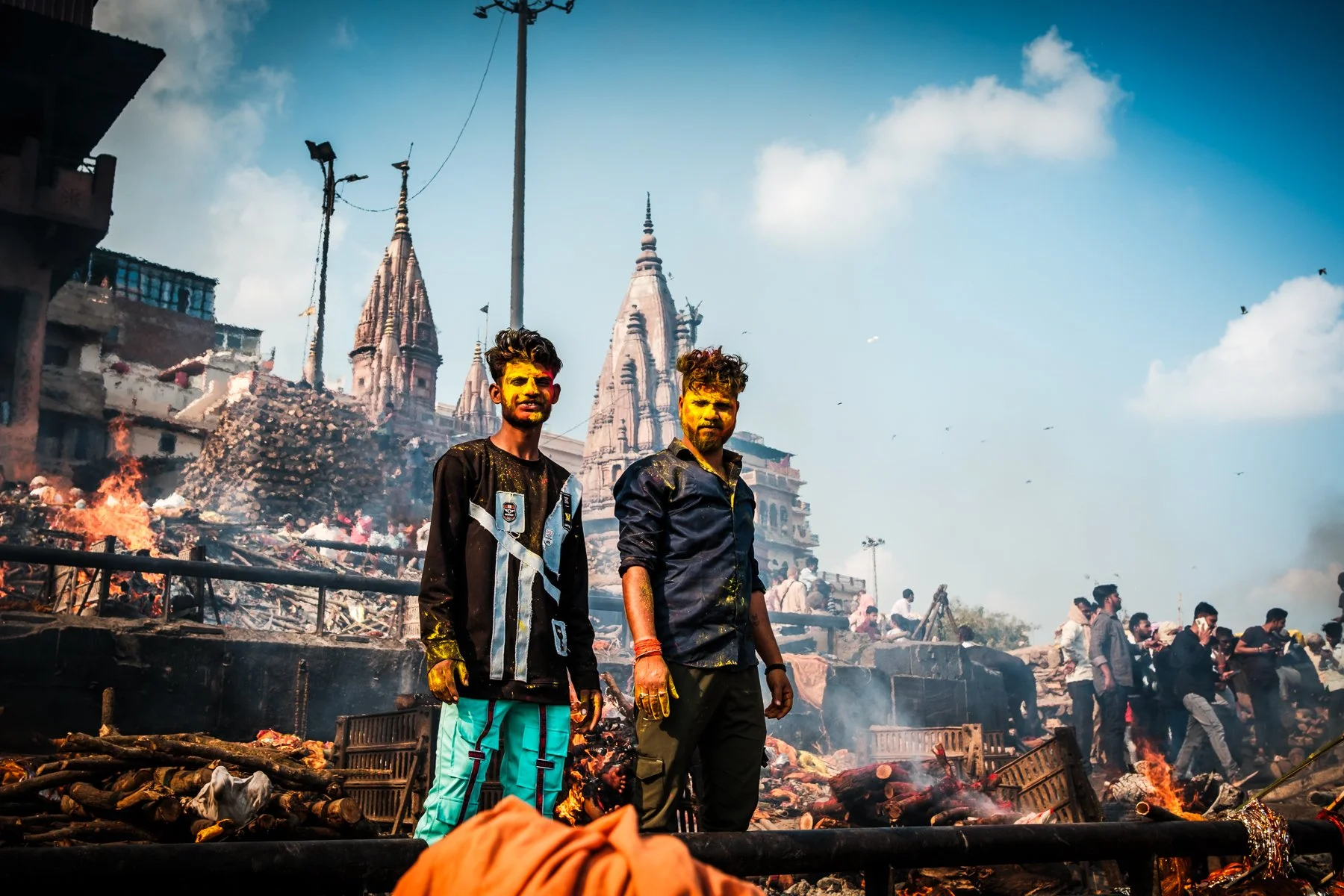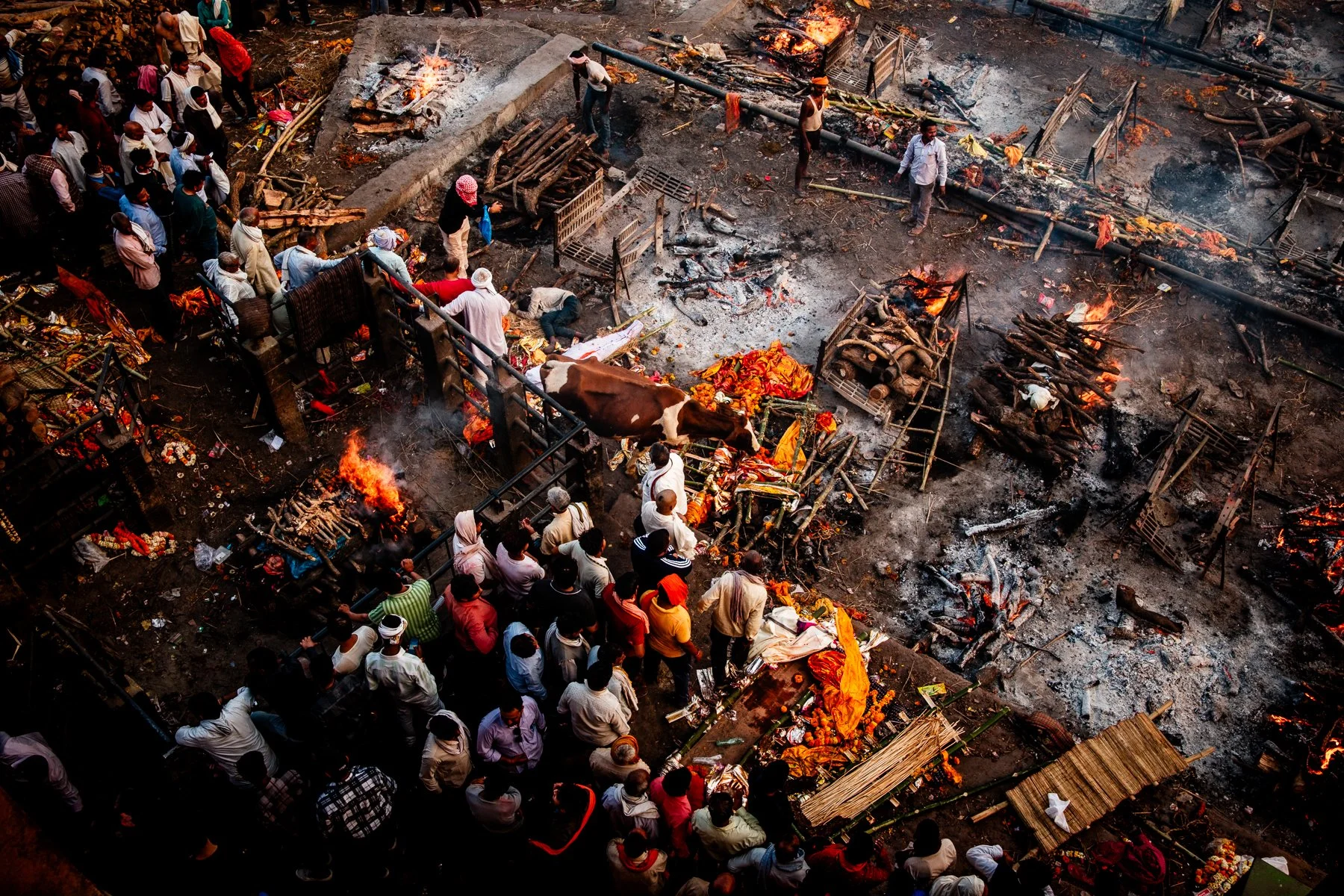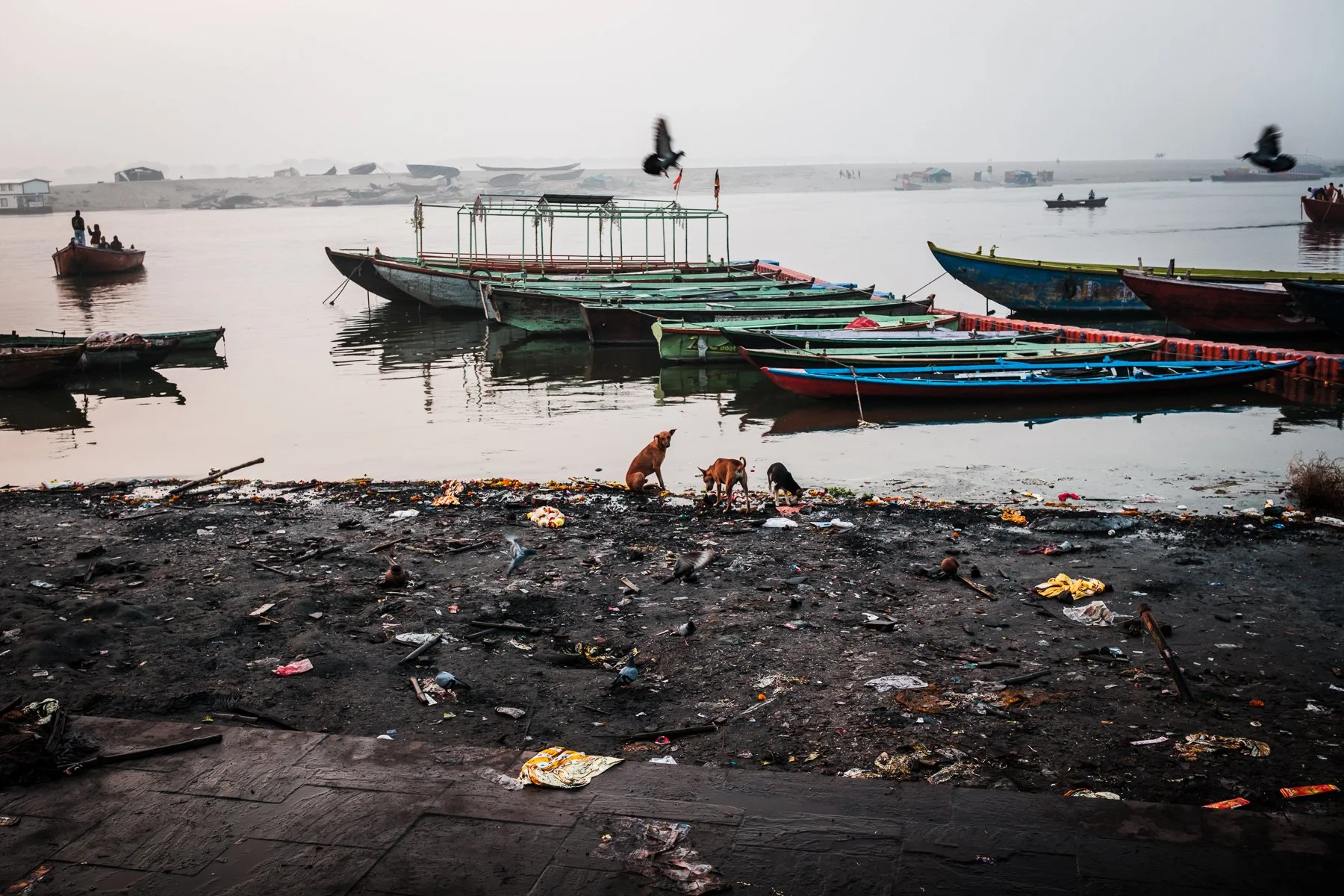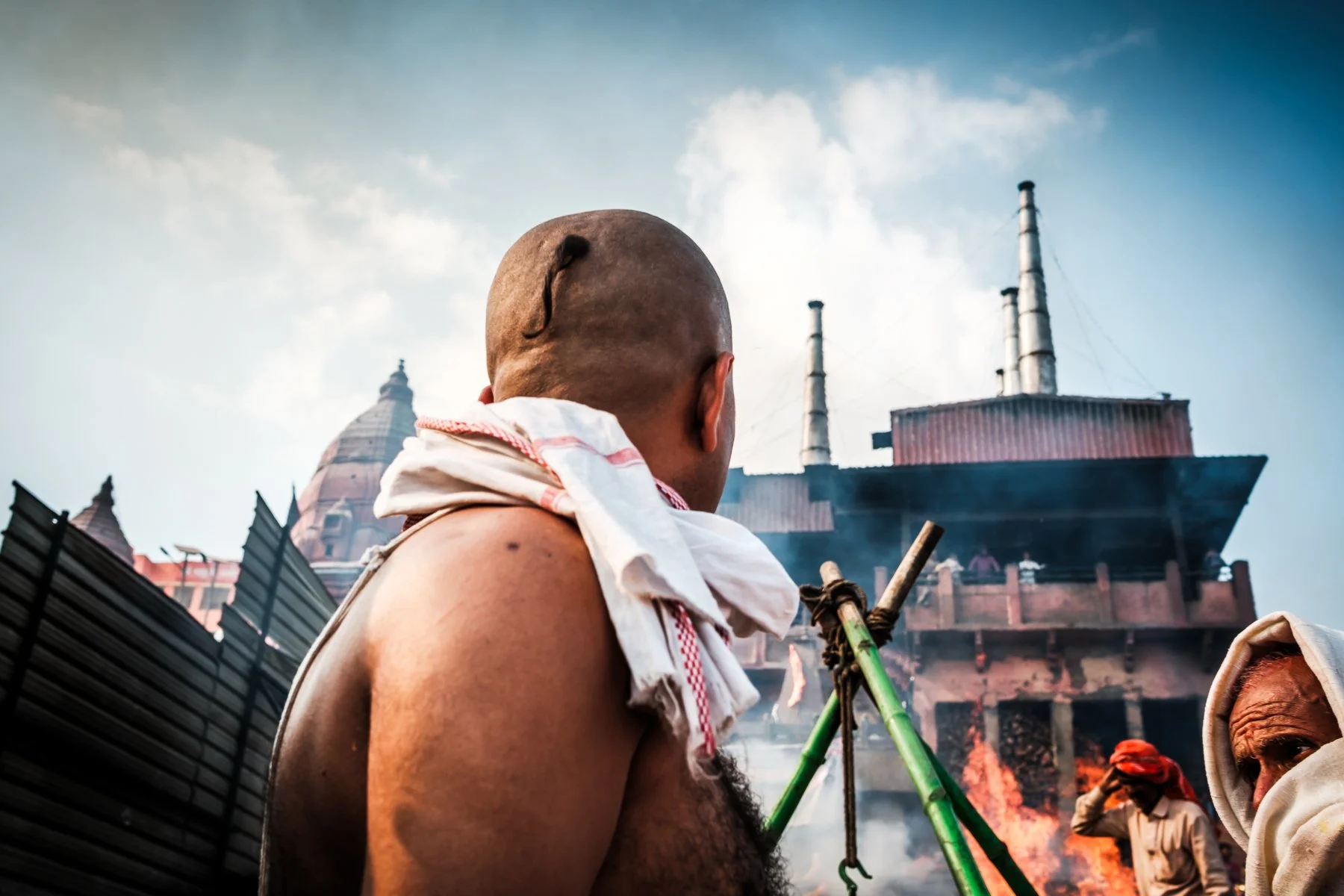Varanasi, the spiritual heart of India, is a city unlike any other. Nestled along the sacred Ganges River, it is believed to be the oldest continuously inhabited city in the world. For Hindus, Varanasi is not just a place but a passage—where life and death converge, where the soul finds liberation. Pilgrims arrive in search of purification, bathing in the river’s holy waters, while others come to spend their final days here, longing for the ultimate release: moksha, the liberation from the cycle of birth and rebirth.
At the core of this eternal city lies Manikarnika Ghat, the most revered of Varanasi’s cremation sites. Fires here have burned for centuries, never extinguished, consuming bodies day and night. The ghat operates beyond time, beyond grief—here, death is not an end but a sacred transition. The air is thick with the scent of sandalwood and ash, the rhythmic chanting of priests blending with the crackling flames. Families gather to witness the last rites of their loved ones, their sorrow met with the stoic acceptance of a belief older than history itself.
Yet, in this place of passage, peace is elusive. The restless hum of the city never fades. Tourists watch from a distance, boatmen call for passengers, and cows meander through the crowds. The clash between ancient ritual and modern chaos creates a paradox: a space meant for transcendence, yet consumed by motion and noise. The dead are at rest, but the living never pause.
Burning Peace is an exploration of this contradiction—where fire meets silence, where grief meets indifference, where death meets the unyielding pulse of life. It is a journey into the paradox of peace in a place where nothing ever truly stops.
